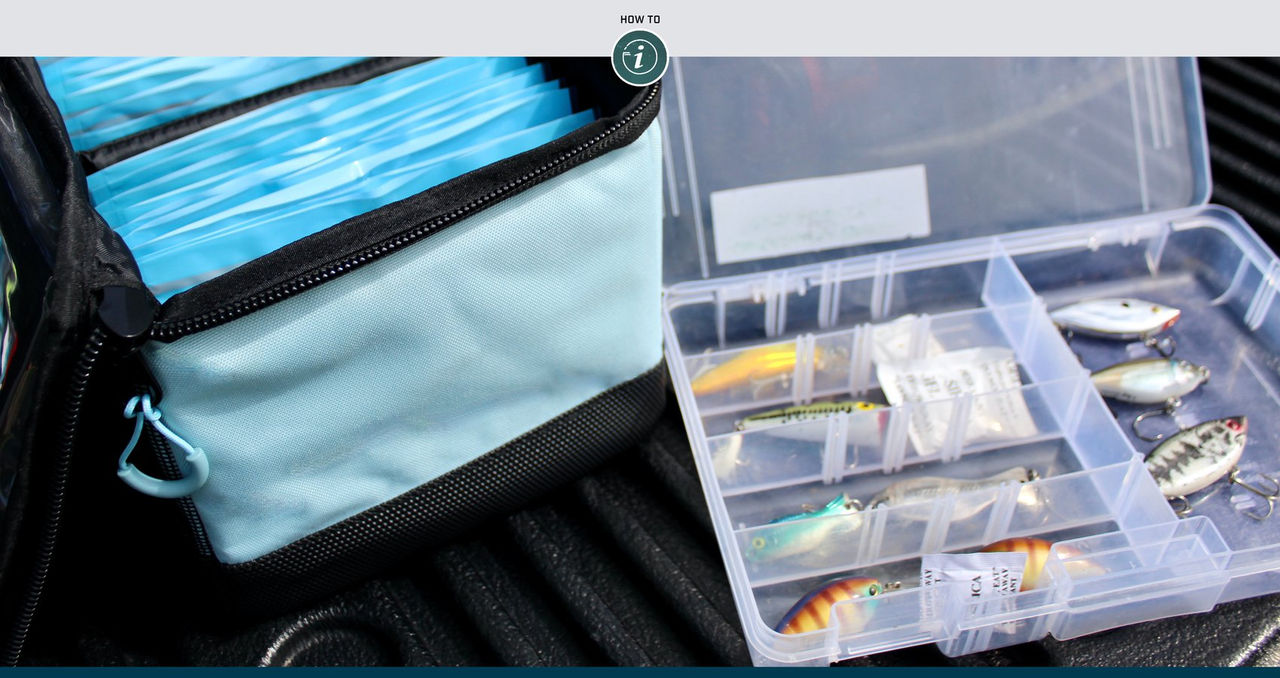The record demand for popular fishing tackle over the past couple of years has caused most anglers to develop a deeper appreciation for their go-to baits and lures. If you’ve struggled to find your favorite tackle in that time, then you understand. In response, you might have come up with some clever ways to extend the life of your most coveted tackle box treasures out of pure necessity during recent shortages, although the money-saving benefits are also a welcome bonus.
If not, we have a few easy ways to keep the strikes coming while getting the most out of your tackle investments. In this article, we’ll cover how to get more life out of your soft plastics, prevent rusty hooks and split rings on lures used in freshwater, and clean your hard-plastic baits.
Get More Mileage from Your Soft Plastics
There are a few key rules for extending the life of your soft-plastic worms, creature baits and swimbaits. The first rule is to store them in the original packaging. Second, don’t mix different soft baits together in the same bag. Third, keep soft baits out of direct sunlight and associated heat.
By storing your soft plastics in the original manufacturer’s bags or clamshell packs, your baits will retain their original scents, colors and shapes. This is key if you want to ensure that your baits continue to elicit the proper action and results when you’re ready to use them. You can organize the packages in a deep tackle storage box or bag that comes with dividers.
If you rip or lose the original bag or package, group soft baits of the same type together in a small zipper-seal sandwich bag and pour a little of your favorite scented worm oil into the bag. The oil will prevent them from drying out, plus you have the bonus of reinvigorated scent on your baits. Try to avoid mixing soft plastics of different types, as colors can bleed and some different plastic types can cause a reaction when they touch that causes the plastic to distort or melt.
Preventing Rusty Hooks and Split Rings
After using your lures, following a rainy day of fishing or if water spray gets into your tackle trays, empty your lures out onto a paper towel when you get back and let them – and your trays – thoroughly dry out before putting the lures back inside the trays. Even if you have waterproof tackle trays, opening the trays in the rain and trapping water inside will cause rust. Sure, you can always replace rusty or corrosion-ridden hooks and split rings using a pair of split ring pliers, but why not do your best to prevent this from happening in the first place?
In addition to keeping your lures dry, use tackle trays or boxes with rust inhibitors whenever possible. In the long run, you’ll find that it’s worth spending a few extra dollars on quality tackle trays with rust-inhibiting technology versus spending money on replacing lures or losing a nice fish to a rusty hook later down the line. If you don’t have tackle trays with rust prevention technology, but still want to absorb the moisture, just add a couple silica gel packets in each tray. You can buy silica gel packs online or repurpose the silica packs that you get in pill containers, shoe boxes and food packages.
Another way to prevent rusty hooks is to avoid leaving salt-infused soft-plastic baits on your hooks for more than a day or two. The salt that is contained in many soft baits will quickly rust and weaken the hooks. Rig your baits the night before and remember to remove soft-plastic baits before storing your gear for any length of time.
Keep Your Hard Baits and Lures Clean
Use a soft-bristle toothbrush and warm soapy water (use mild dish soap) to gently clean your lures if they get caked with mud, weed debris, scented gels or anything else. Cleaning your hard baits (such as crankbaits or topwater lures) will allow your lures to retain the original flash, vibration and color that make them so effective at catching fish. When you’re finished cleaning and rinsing your lures, be sure to let them dry off completely before placing them back inside your tackle trays.
Keeping your soft plastics and lures in good shape and ready for use at any time is easy by making just a few simple changes to your tackle storage and maintenance routine.




